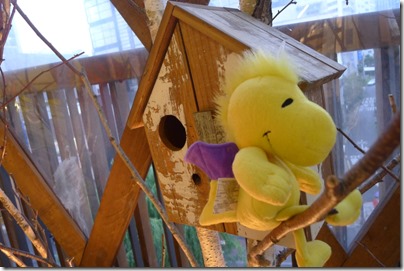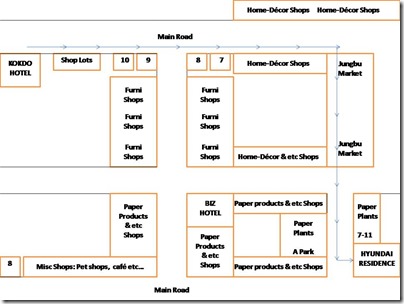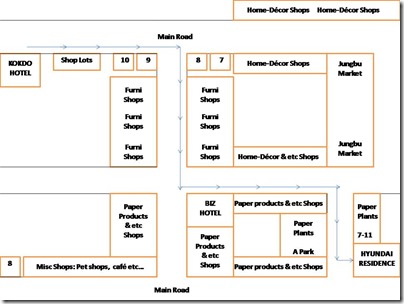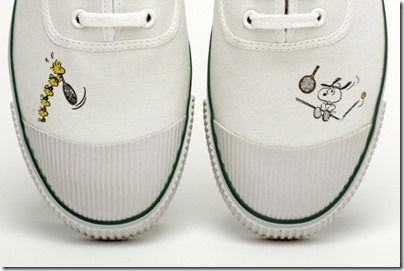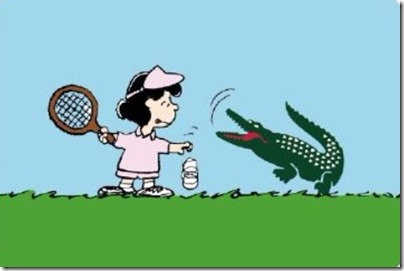written by SARAH BOXER
NOVEMBER 2015 ISSUE
The Atlantic
Some of Charles Schulz’s fans blame
the cartoon dog for ruining Peanuts.
Here’s why they’re wrong.
It really was a dark and stormy night.
On February 12, 2000,
Charles Schulz—who had single-handedly
drawn some 18,000 Peanuts comic strips,
who refused to use assistants to
ink or letter his comics,
who vowed that after he quit,
no new Peanuts strips would be made—
died, taking to the grave, it seemed,
any further adventures of the gang.
Hours later,
his last Sunday strip came out
with a farewell:
“Charlie Brown, Snoopy, Linus, Lucy …
How can I ever forget them.”
By then, Peanuts was carried by
more than 2,600 newspapers in
75 countries and read by
some 300 million people.
It had been going for five decades.
Robert Thompson,
a scholar of popular culture,
called it “arguably the longest story told by
a single artist in human history.”
The arrival of The Peanuts Movie this fall
breathes new life into the phrase
over my dead body—
starting with the movie’s title.
Schulz hated and resented the name Peanuts,
which was foisted on him by
United Feature Syndicate.
He avoided using it:
“If someone asks me what I do,
I always say,
‘I draw that comic strip with
Snoopy in it, Charlie Brown and his dog.’ ”
And unlike the classic Peanuts television specials,
which were done in a style
Schulz approvingly called “semi-animation,”
where the characters flip around
rather than turning smoothly in space,
The Peanuts Movie
(written by Schulz’s son Craig and
grandson Bryan, along with
Bryan’s writing partner, Cornelius Uliano)
is a computer-generated 3-D-animated feature.
What’s more,
the Little Red-Haired Girl,
Charlie Brown’s unrequited crush,
whom Schulz promised never to draw,
is supposed to make a grand appearance.
AAUGH!!!
The characters could stir up
shockingly heated arguments over
how to be a decent human being
in a bitter world.
Before all that happens,
before the next generation gets
a warped view of what Peanuts is and was,
let’s go back in time.
Why was this comic strip so
wildly popular for half a century?
How did Schulz’s cute and lovable characters
(they’re almost always referred to that way)
hold sway over so many people—
everyone from
Ronald Reagan to Whoopi Goldberg?
Peanuts was deceptive.
It looked like kid stuff, but it wasn’t.
The strip’s cozy suburban conviviality,
its warm fuzziness, actually
conveyed some uncomfortable truths
about the loneliness of social existence.
The characters, though funny,
could stir up shockingly heated arguments over
how to survive and still be a
decent human being in a bitter world.
Who was better at it—
Charlie Brown or Snoopy?
The time is ripe to see what was
really happening on the pages of Peanuts
during all those years.
Since 2004,
the comics publisher Fantagraphics
has been issuing The Complete Peanuts,
both Sunday and daily strips,
in books that each cover two years and
include an appreciation from a notable fan.
(The 25-volume series will be
completed next year.)
To read them straight through,
alongside David Michaelis’s
trenchant 2007 biography,
Schulz and Peanuts,
is to watch the characters evolve from
undifferentiated little cusses into
great social types.
In the stone age of Peanuts—
when only seven newspapers carried the strip,
when Snoopy was still an
itinerant four-legged creature with
no owner or doghouse,
when Lucy and Linus had yet to be born—
Peanuts was surprisingly dark.
The first strip,
published on October 2, 1950,
shows two children, a boy and a girl,
sitting on the sidewalk.
The boy, Shermy, says,
“Well! Here comes ol’ Charlie Brown!
Good ol’ Charlie Brown …
Yes, sir! Good ol’ Charlie Brown.”
When Charlie Brown is out of sight,
Shermy adds, “How I hate him!”
In the second Peanuts strip
the girl, Patty, walks alone, chanting,
“Little girls are made of sugar and spice …
and everything nice.”
As Charlie Brown comes into view,
she slugs him and says,
“That’s what little girls are made of!”
Although key characters were missing or
quite different from what they came to be,
the Hobbesian ideas about society that
made Peanuts were already evident:
People, especially children,
are selfish and cruel to one another;
social life is perpetual conflict;
solitude is the only peaceful harbor;
one’s deepest wishes will
invariably be derailed and
one’s comforts whisked away;
and an unbridgeable gulf yawns between
one’s fantasies about oneself and
what others see.
These bleak themes, which
went against the tide of the go-go 1950s,
floated freely on the pages of Peanuts at first,
landing lightly on one kid or another until
slowly each theme came to be embedded in
a certain individual—
particularly Lucy, Schroeder, Charlie Brown,
Linus, and Snoopy.
In other words, in the beginning
all the Peanuts kids were,
as Al Capp,
the creator of Li’l Abner, observed,
“good mean little bastards
eager to hurt each other.”
What came to be Lucy’s inimitable
brand of bullying was suffused throughout
the Peanuts population.
Even Charlie Brown was a bit of a heel.
In 1951, for example,
after watching Patty fall off
a curb into some mud,
he smirks: “Right in the mud, eh?
It’s a good thing I was carrying the ice cream!”
Many early Peanuts fans—
and this may come as a shock to
later fans raised on the sweet milk of
Happiness Is a Warm Puppy—
were attracted to the strip’s
decidedly unsweet view of society.
Matt Groening, the creator of the strip
Life in Hell and The Simpsons, remembers,
“I was excited by the casual cruelty and
offhand humiliations at the heart of the strip.”
Garry Trudeau, of Doonesbury fame,
saw Peanuts as “the first Beat strip” because
it “vibrated with ’50s alienation.”
And the editors of Charlie Mensuel,
a raunchy precursor to
the even raunchier Charlie Hebdo,
so admired the existential angst
of the strip that
they named both publications after
its lead character.
At the center of this world was
Charlie Brown,
a new kind of epic hero—
a loser who would lie in the dark
recalling his defeats,
charting his worries,
planning his comebacks.
One of his best-known lines was
“My anxieties have anxieties.”
Although he was the glue holding together
the Peanuts crew (and its baseball team),
he was also the undisputed butt of the strip.
His mailbox was almost always empty.
His dog often snubbed him,
at least until suppertime,
and the football was always
yanked away from him.
The cartoonist Tom Tomorrow
calls him a Sisyphus.
Frustration was his lot.
When Schulz was asked whether
for his final strip he would let
Charlie Brown make contact with the football,
he reportedly replied,
“Oh, no! Definitely not! …
That would be a terrible disservice to him
after nearly half a century.”
For many fans,
there was something fundamentally rotten
about the new Snoopy.
Although Schulz denied any
strict identification with Charlie Brown
(who was actually named for one of
Schulz’s friends at the
correspondence school in Minneapolis where
Schulz learned and taught drawing),
many readers assumed they were
one and the same.
More important for the strip’s success,
readers saw themselves in Charlie Brown,
even if they didn’t want to.
“I aspired to Linus-ness;
to be wise and kind and highly skilled at
making gigantic structures out of playing cards,”
the children’s-book author Mo Willems
notes in one of the essays in
the Fantagraphics series.
But, he continues,
“I knew, deep down, that
I was Charlie Brown.
I suspect we all did.”
Well, I didn’t.
And luckily, beginning in 1952
(after Schulz moved from his hometown,
St. Paul, Minnesota,
to Colorado Springs for a year with
his first wife, Joyce, and her daughter, Meredith),
there were plenty more
alter egos to choose from.
That was the year the Van Pelts were born.
Lucy, the fussbudget, who was based
at first on young Meredith,
came in March.
Lucy’s blanket-carrying little brother,
Linus, Schulz’s favorite character to draw
(he would start with his pen
at the back of the neck),
arrived only months later.
And then, of course,
there was Snoopy,
who had been around from the outset
(Schulz had intended to name him Sniffy) and
was fast evolving into an articulate being.
His first detailed expression of consciousness,
recorded in a thought balloon,
came in response to Charlie Brown
making fun of his ears:
“Kind of warm out today for
ear muffs, isn’t it?”
Snoopy sniffs:
“Why do I have to suffer such indignities!?”
I like to think that Peanuts and identity politics
grew up together in America.
By 1960, the main characters—
Charlie Brown, Linus, Schroeder, Snoopy—
had their roles and their acolytes.
Even Lucy had her fans.
The filmmaker John Waters,
writing an introduction to
one of the Fantagraphics volumes, gushes:
I like Lucy’s politics (“I know everything!” …),
her manners (“Get out of my way!” …),
her narcissism …
and especially her verbal abuse rants …
Lucy’s “total warfare frown” …
is just as iconic to me as
Mona Lisa’s smirk.
Finding one’s identity in the strip was like
finding one’s political party or
ethnic group or niche in the family.
It was a big part of the appeal of Peanuts.
Every character was a powerful personality with
quirky attractions and profound faults,
and every character, like some saint or hero,
had at least one key prop or attribute.
Charlie Brown had his tangled kite,
Schroeder his toy piano,
Linus his flannel blanket,
Lucy her “Psychiatric Help” booth,
and Snoopy his doghouse.
In this blessedly solid world,
each character came to be linked
not only to certain objects but
to certain kinds of interactions, too,
much like the main players in Krazy Kat,
one of the strips that Schulz admired and
hoped to match.
But unlike Krazy Kat, which was built upon
a tragically repetitive love triangle that
involved animals hurling bricks,
Peanuts was a drama of social coping,
outwardly simple but
actually quite complex.
Charlie Brown,
whose very character depended on
his wishes being stymied, developed
what the actor Alec Baldwin,
in one of the Fantagraphics introductions,
calls a kind of
“trudging, Jimmy Stewart–like
decency and predictability.”
The Charlie Brown way was to
keep on keeping on,
standing with a tangled kite or
a losing baseball team day after day.
Michaelis, Schulz’s biographer,
locates the essence of
Charlie Brown—and Peanuts itself—
in a 1954 strip in which
Charlie Brown visits Shermy and watches as
he “plays with a model train set whose
tracks and junctions and crossings spread …
elaborately far and wide in
Shermy’s family’s living room.”
After a while,
Charlie Brown pulls on his coat
and walks home … [and]
sits down at his railroad:
a single, closed circle of track …
Here was the moment when
Charlie Brown became a national symbol,
the Everyman who survives life’s
slings and arrows simply by
surviving himself.
In fact, all of the characters were survivors.
They just had different strategies for survival,
none of which was exactly pro-social.
Linus knew that he could
take his blows philosophically—
he was often seen, elbows on the wall,
calmly chatting with Charlie Brown—
as long as he had his security blanket nearby.
He also knew that if he didn’t have his blanket,
he would freak out.
(In 1955 the child psychiatrist D. W. Winnicott
asked for permission to use
Linus’s blanket as an illustration of
a “transitional object.”)
Lucy, dishing out
bad and unsympathetic advice
fromher “Psychiatric Help” booth,
was the picture of bluster.
On March 27, 1959,
Charlie Brown, the first patient to
visit her booth, says to Lucy,
“I have deep feelings of depression …
What can I do about this?”
Lucy replies:
“Snap out of it! Five cents, please.”
That pretty much sums up the Lucy way.
Schroeder at his piano
represented artistic retreat—
ignoring the world to pursue one’s dream.
And Snoopy’s coping philosophy was,
in a sense, even
more antisocial than Schroeder’s.
Snoopy figured that since no one will
ever see you the way you see yourself,
you might as well
build your world around fantasy,
create the person you want to be,
and live it out, live it up.
Part of Snoopy’s Walter Mitty–esque charm
lay in his implicit rejection of
society’s view of him.
Most of the kids saw him as just a dog,
but he knew he was way more than that.
Those characters who could not
be summed up with both
a social strategy and a recognizable attribute
(Pig-Pen, for instance,
had an attribute—dirt—
but no social strategy)
became bit players or fell by the wayside.
Shermy, the character who uttered the
bitter opening lines of Peanuts in 1950,
became just another bland boy by the 1960s.
Violet, the character who
made endless mud pies,
withheld countless invitations,
and had the distinction of being
the first person to
pull the football away from Charlie Brown,
was mercilessly demoted to
just another snobby mean girl.
Patty, one of the early stars,
had her name recycled for another,
more complicated character,
Peppermint Patty,
the narcoleptic tomboy who
made her first appearance in 1966 and
became a regular in the 1970s.
(Her social gambit was to fall asleep,
usually at her school desk.)
One of Charlie Brown’s best-known lines was
“My anxieties have anxieties.”
Once the main cast was set,
the iterations of their daily interplay were
almost unlimited.
“A cartoonist,” Schulz once said,
“is someone who has to
draw the same thing every day without
repeating himself.”
It was this
“infinitely shifting repetition of the patterns,”
Umberto Eco wrote in
The New York Review of Books in 1985,
that gave the strip its epic quality.
Watching the permutations of
every character working out
how to get along with
every other character demanded
“from the reader a continuous act of empathy.”
For a strip that depended on
the reader’s empathy,
Peanuts often involved dramas that
displayed a shocking lack of empathy.
And in many of those dramas,
the pivotal figure was
Lucy, the fussbudget who
couldn’t exist without others to fuss at.
She was so strident, Michaelis reports,
that Schulz relied on certain pen nibs for her.
(When Lucy was “doing some loud shouting,”
as Schulz put it, he would ink up a B-5 pen,
which made heavy, flat, rough lines.
For “maximum screams,”
he would get out the B-3.)
Lucy was, in essence, society itself,
or at least society as Schulz saw it.
“Her aggressiveness
threw the others off balance,”
Michaelis writes, prompting each character to
cope or withdraw in his or her own way.
Charlie Brown, for instance,
responded to her with incredible credulity,
coming to her time and again for
pointless advice or for football kicking.
Linus always seemed to approach her with
a combination of terror and equanimity.
In one of my favorite strips,
he takes refuge from
his sister in the kitchen and,
when Lucy tracks him down,
addresses her pointedly:
“Am I buttering too loud for you?”
It was Lucy’s dealings with Schroeder that
struck closest to home for Schulz,
whose first marriage, to Joyce,
began to fall apart in the 1960s while
they were building up their
huge estate in Sebastopol, California.
Just as Schulz’s retreat into his comic-strip world
antagonized Joyce, Michaelis observes,
so Schroeder’s devotion to his piano was
“an affront to Lucy.”
At one point,
Lucy becomes so fed up at her inability to
distract Schroeder from his music that
she hurls his piano into the sewer:
“It’s woman against piano!
Woman is winning!!
Woman is winning!!!”
When Schroeder shouts at her in disbelief,
“You threw my piano down the sewer!!,”
Lucy corrects him:
“Not your piano, Sweetie …
My competition!”
Now, that’s a relationship!
In this deeply dystopic strip,
there was only one character who could—
and some say finally did—
tear the highly entertaining, disturbed
social world to shreds.
And that happens to be
my favorite character,
Snoopy.
Before Snoopy had his signature doghouse,
he was an emotional creature.
Although he didn’t speak
(he expressed himself in thought balloons),
he was very connected to
all the other characters.
In one 1958 strip, for instance,
Linus and Charlie Brown are
talking in the background,
and Snoopy comes dancing by.
Linus says to Charlie Brown,
“My gramma says that
we live in a veil of tears.”
Charlie Brown answers:
“She’s right … This is a sad world.”
Snoopy still goes on dancing.
By the third frame, though,
when Charlie Brown says,
“This is a world filled with sorrow,”
Snoopy’s dance slows and
his face begins to fall.
By the last frame,
he is down on the ground—
far more devastated than
Linus or Charlie Brown, who are
shown chatting off in the distance,
“Sorrow, sadness and despair …
grief, agony and woe …”
But by the late 1960s,
Snoopy had begun to change.
For example,
in a strip dated May 1, 1969,
he’s dancing by himself:
“This is my ‘First Day of May’ dance.
It differs only slightly from
my ‘First Day of Fall’ dance,
which differs also only slightly from
my ‘First Day of Spring’ dance.”
Snoopy continues dancing and ends with:
“Actually, even I have a hard time
telling them apart.”
Snoopy was still hilarious,
but something fundamental had shifted.
He didn’t need any of the other characters
in order to be what he was.
He needed only his imagination.
More and more often
he appeared alone on his doghouse,
sleeping or typing a novel or a love letter.
Indeed, his doghouse—
which was hardly taller than
a beagle yet big enough inside to
hold an Andrew Wyeth painting
as well as a pool table—
came to be the objective correlative of
Snoopy’s rich inner life,
a place that no human ever got to see.
Some thought
this new Snoopy was an excellent thing,
indeed the key to the strip’s greatness.
Schulz was among them:
“I don’t know how he got to walking,
and I don’t know how he first began to think,
but that was probably one of the
best things that I ever did.”
The novelist Jonathan Franzen
is another Snoopy fan.
Snoopy, as Franzen has noted, is
the protean trickster whose freedom is
founded on his confidence that
he’s lovable at heart,
the quick-change artist who,
for the sheer joy of it,
can become a helicopter or
a hockey player or Head Beagle and
then again, in a flash,
before his virtuosity has a chance to
alienate you or diminish you,
be the eager little dog who
just wants dinner.
But some people detested the new Snoopy and
blamed him for what they viewed as
the decline of Peanuts
in the second half of its 50-year run.
“It’s tough to fix the exact date when
Snoopy went from being the strip’s
besetting artistic weakness to
ruining it altogether,”
the journalist and critic
Christopher Caldwell wrote in 2000,
a month before Schulz died, in an essay
in New York Press titled “Against Snoopy.”
But certainly by the 1970s, Caldwell wrote,
Snoopy had begun wrecking
the delicate world that Schulz had built.
The problem, as Caldwell saw it, was that
Snoopy was never a full participant in
the tangle of relationships that
drove Peanuts in its Golden Age.
He couldn’t be:
he doesn’t talk … and
therefore he doesn’t interact.
He’s there to be looked at.
Snoopy unquestionably took the strip to
a new realm beginning in the late 1960s.
The turning point, I think,
was the airing of
It’s the Great Pumpkin, Charlie Brown
in 1966.
In this Halloween television special,
Snoopy is shown sitting atop his doghouse
living out his extended fantasy of
being a World War I flying ace
shot down by the Red Baron and then
crawling alone behind enemy lines in France.
Snoopy is front and center for six minutes,
about one-quarter of the whole program,
and he steals the show,
proving that he doesn’t need the
complicated world of Peanuts to thrive.
He can go it alone.
And after that he often did.
In 1968, Snoopy became NASA’s mascot.
The next year, Snoopy had a
lunar module named after him for
the Apollo 10 mission
(the command module was called Charlie Brown).
In 1968 and 1972,
Snoopy was a write-in candidate for
president of the United States.
Plush stuffed Snoopys became popular.
(I had one.)
By 1975,
Snoopy had replaced Charlie Brown as
the center of the strip.
He cut a swath through the world.
For instance,
in parts of Europe Peanuts came
to be licensed as Snoopy.
And in Tokyo,
the floor of the vast toy store Kiddy Land that is
devoted to Peanuts is called Snoopy Town.
To accommodate this new Snoopy-centric world,
Schulz began making changes.
He invented a whole new
animal world for Snoopy.
First came Woodstock, a
bird who communicates only with Snoopy
(in little tic marks).
And then Snoopy acquired a family:
Spike, a droopy-eyed, mustachioed beagle,
followed by Olaf, Andy, Marbles, and Belle.
In 1987, Schulz acknowledged that
introducing Snoopy’s relatives had been a blunder,
much as Eugene the Jeep had been
an unwelcome intrusion into
the comic strip Popeye:
It’s possible—I think—
to make a mistake in the strip and
without realizing it, destroy it …
I realized it myself a couple of years ago
when I began to introduce
Snoopy’s brothers and sisters …
It destroyed the relationship that
Snoopy has with the kids,
which is a very strange relationship.
He was right.
Snoopy’s initial interactions with the kids—
his understanding of humanity,
indeed his deep empathy
(just what they were often missing),
coupled with his
inability to speak—were unique.
And that’s why
whenever Snoopy’s relatives showed up,
the air just went out of the strip.
But for many fans,
it wasn’t merely Snoopy’s brothers and sisters
dragging him down.
There was something fundamentally rotten
about the new Snoopy,
whose charm was based on
his total lack of concern about
what others thought of him.
His confidence, his breezy sense that
the world may be falling apart but
one can still dance on,
was worse than irritating.
It was morally bankrupt.
As the writer Daniel Mendelsohn
put it in a piece in
The New York Times Book Review,
Snoopy “represents the part of ourselves—
the smugness, the avidity, the pomposity,
the rank egotism—
most of us know we have but try to
keep decently hidden away.”
While Charlie Brown was made to
be buffeted by other personalities and
cared very much what others thought of him,
Snoopy’s soul is all about self-invention—
which can be seen as delusional self-love.
This new Snoopy,
his detractors felt,
had no room for empathy.
To his critics, part of
what’s appalling about Snoopy is
the idea that it’s possible to
create any self-image one wants—
in particular, the profile of someone with
tons of friends and accomplishments—
and sell that image to the world.
Such self-flattery is
not only shallow but wrong.
Snoopy, viewed this way,
is the very essence of selfie culture,
of Facebook culture.
He’s the kind of creature who
would travel the world only in order to
take his own picture and
share it with everyone,
to enhance his social image.
He’s a braggart.
Unlike Charlie Brown, who is alienated
(and knows he’s alienated),
Snoopy is alienating
(and totally fails to recognize it).
He believes that he is what
he’s been selling to the world.
Snoopy is “so self-involved,”
Mendelsohn writes,
“he doesn’t even realize he’s not human.”
Just as some people thought that
Charlie Brown, the insecure loser,
the boy who never won the love of
the Little Red-Haired Girl,
was the alter ego of Schulz himself
near the beginning of his career,
so Snoopy could be cast as
the egotistical alter ego of
Schulz the world-famous millionaire,
who finally found a little happiness in
his second marriage and thus
became insufferably cutesy.
(In 1973,
Schulz and his wife divorced,
and a month later
Schulz married Jeannie Clyde,
a woman he met at the Warm Puppy Café,
at his skating rink in Santa Rosa, California.)
Two-legged Snoopy,
with his airs and fantasies—
peerless Snoopy,
rich Snoopy,
popular Snoopy,
world-famous Snoopy,
contented Snoopy—
spoiled it all.
Schulz, who had a lifelong fear of
being seen as ostentatious, believed that t
he main character of a comic strip
should not be too much of a showboat.
He also once said
he wished he could use Charlie Brown—
whom he described as
the lead character every good strip needs,
“somebody that you like that
holds things together”—a little more.
But he was smitten with Snoopy.
(During one of the Christmas ice shows
in Santa Rosa, while watching Snoopy skate,
Schulz leaned over and remarked to
his friend Lynn Johnston, another cartoonist,
“Just think … there was a time when
there was no Snoopy!”)
Schulz, Johnston writes in an introduction to
one of the Fantagraphics volumes,
found his winning self in this dog:
Snoopy was the one
through which he soared.
Snoopy allowed him to be
spontaneous, slapstick,
silly, and wild.
Snoopy was rhythm, comedy,
glamour, and style …
As Snoopy,
he had no failures,
no losses, no flaws …
Snoopy had friends and
admirers all over the globe.
Snoopy was the polar opposite of
Charlie Brown, who had nothing but
failures, losses, and flaws.
But were the two quite so radically far apart?
Snoopy’s critics are wrong,
and so are readers who think that
Snoopy actually believes his self-delusions.
Snoopy may be shallow in his way,
but he’s also deep,
and in the end deeply alone,
as deeply alone as Charlie Brown is.
Grand though his flights are,
many of them end with his realizing that
he’s tired and cold and lonely and that
it’s suppertime.
As Schulz noted on The Today Show
when he announced his retirement,
in December 1999:
“Snoopy likes to think that
he’s this independent dog who
does all of these things and
leads his own life,
but he always makes sure that
he never gets too far from
that supper dish.”
He has animal needs,
and he knows it,
which makes him, in a word,
human.
Even Snoopy’s wildest daydreams
have a touch of pathos.
When he marches alone through
the trenches of World War I,
yes, of course, he is fantasizing,
but he also can be seen as
the bereft young Charles Schulz,
shipped off to war only days after
his mother died at the age of 50,
saying to him:
“Good-bye, Sparky.
We’ll probably never see each other again.”
The final comic strips,
which came out when
Schulz realized he was dying,
are pretty heartbreaking.
All of the characters seem to be
trying to say goodbye,
reaching for the solidarity that
has always eluded them.
Peppermint Patty,
standing in the rain
after a football game, says,
“Nobody shook hands and said,
‘Good game.’ ”
Sally shouts to her brother, Charlie Brown:
“Don’t you believe in brotherhood?!!”
Linus lets out a giant, boldface “SIGH!”
Lucy, leaning as ever on Schroeder’s piano,
says to him,
“Aren’t you going to thank me?”
But it’s Snoopy who is
grappling with the big questions,
the existential ones.
Indeed, by his thought balloons alone,
you might mistake him for Charlie Brown.
The strip dated January 15, 2000,
shows Snoopy on his doghouse.
“I’ve been very tense lately,”
Snoopy thinks,
rising up stiffly from his horizontal position.
“I find myself worrying about everything …
Take the Earth, for instance.”
He lies back down,
this time on his belly,
clutching his doghouse:
“Here we all are clinging helplessly to
this globe that is hurtling through space …”
Then he turns over onto his back:
“What if the wings fall off?”
Snoopy may have been delusional,
but in the end he knew very well that
everything could come tumbling down.
His very existence seems to be
a way of saying that no matter what
a person builds up for himself
inside or outside society,
everyone is basically alone
in it together.
By the way,
in the end Snoopy did admit to
at least one shortcoming, though
he claimed he wasn’t really to blame.
In the strip that ran on January 1, 2000,
drawn in shaky lines,
the kids are having a great snowball fight.
Snoopy sits on the sidelines,
struggling to get his paws around a snowball:
“Suddenly the dog realized that
his dad had never taught him
how to throw snowballs.”
written by SARAH BOXER
NOVEMBER 2015 ISSUE
The Atlantic

